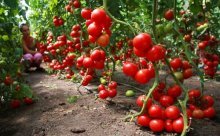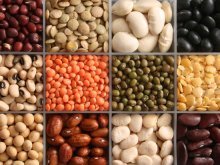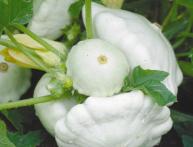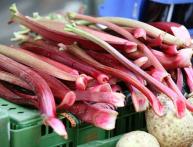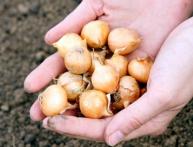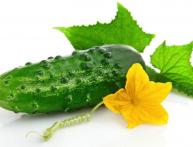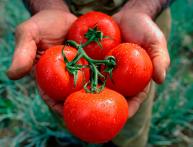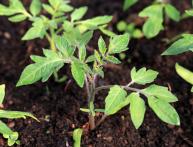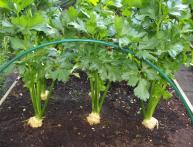What does a determinate plant mean, examples of crops with determinate varieties

With the beginning of spring, the gardening season begins for many people. Those who like to tinker with the land and grow vegetables, berries, and fruits with their own hands go to garden centers to buy seeds.
Most manufacturers package their seeds in colorful bags on which you can read that these varieties are the best, the largest.
Few people pay attention to obscure words such as determinate variety and indeterminate variety.
Let’s try to figure out how a determinate plant differs from an indeterminate plant. It is more convenient to make a comparison using such a familiar vegetable as a tomato.
Content:
- The concept of a determinate plant using tomatoes as an example
- Determinant cucumber varieties
- Determinate varieties of pumpkin, buckwheat and legumes
The concept of a determinate plant using tomatoes as an example
If you look at the information on a bag of seeds tomato, the word determinant was encountered, this means that the bushes of this plant are formed in a special way and after laying an inflorescence at the top of the main stem, the growth of such shoots in height stops.
The word itself, translated from Latin, means limited growth, therefore determinate plants include those whose growth is limited due to the formation of flowers at the top.
Determinate varieties and hybrids of tomatoes include those whose stems stop growing at around 100 cm. The main shoot and stepsons stop growing as soon as two to four flower clusters are formed on them.
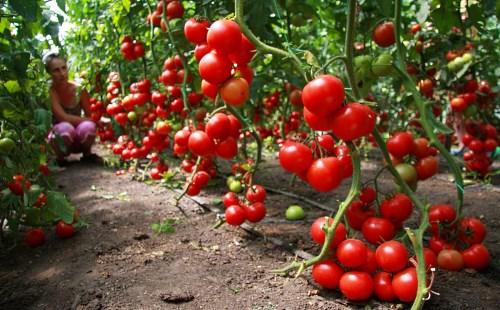
Among the determinate varieties and hybrids of tomatoes, there are those whose height does not exceed 30 cm; they are usually called super-determinant. Growth restriction in such plants occurs when three inflorescences appear on the main shoot.
The first is located above the 5th - 6th leaf, the next two - through one leaf. Such tomatoes They do not require pinching; they are good to grow not only in closed and open ground, but even in city apartments.
Almost all low-growing tomatoes are early-ripening varieties.
Determinate tomato bushes reach a maximum height of 120 cm. They have short internodes, and the first inflorescence is laid above the sixth - seventh leaf and stops growing after the formation of 4 - 6 inflorescences.
It is convenient to grow such varieties both in open ground and in low film shelters. Almost no bush formation is required.
Of the tomato varieties and hybrids with limited shoot growth, the following deserve attention:
- Grouse
- Hermitage
- Major
- Darling
- Ace
In addition to tomatoes, there are other cultivated plants with limited growth, as a rule, they are the result of the work of breeders and, together with their short growth, have other advantages.
Determinate varieties of cucumbers
The biological feature of cucumbers is long vines that stretch along the beds or grow upward, climbing two-meter trellises.
Many gardeners traditionally obtain a harvest of cucumbers by growing them on trellises, and such varieties are common to see in most plots.
The inconvenience when growing long-climbing varieties is primarily due to the need to create additional artificial supports for them and the tendency to break off long and fragile shoots.
In this regard, short-stemmed varieties of cucumbers, which are classified as determinate plants, are now becoming increasingly popular. The length of the lashes of such cucumbers does not exceed 50 - 60 cm when grown in open ground and 80 -100 cm in greenhouses.
The growth of the central shoot in determinate cucumbers ends with the formation of a flower raceme. After this, the plant develops as a bush type and fruiting occurs on numerous lateral branches.
The agricultural technology for growing bush cucumbers is somewhat different from growing conventional varieties with unlimited stem growth.
First of all, bushes are sown cucumbers quite often, at a distance of no more than 10 cm from each other. Accordingly, the soil should be more fertile, watering and fertilizing should be done more often.
Short-stemmed cucumbers yield a more uniform harvest, up to four kg per plant. The undoubted advantage of cucumbers with limited growth is resistance to many diseases.
When selecting varieties for cultivation on a personal plot, you should pay attention to cucumbers of the Vyazemsky 37 variety and the hybrid Hector F 1.
These cucumbers have short vines and compact bushes. Purpose - universal, disease resistant, fruits are uniform in size and ripening.
If you plant cucumbers with limited growth, you can forever get rid of the construction of trellises and the tedious fastening of cucumber shoots on it. For determinate cucumbers, it is easier to create shelter from late frosts, which allows you to preserve the crop in unfavorable weather conditions.
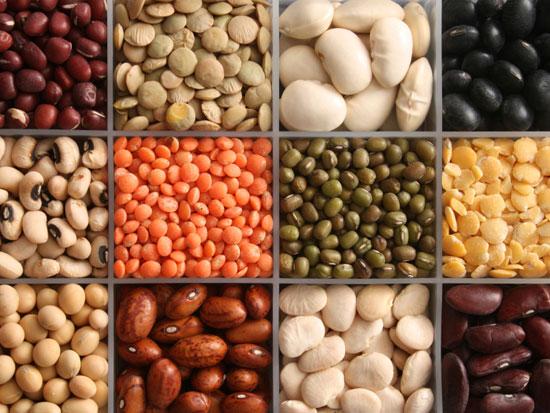
In addition to cucumbers and tomatoes, there are other vegetable, cereal and fodder crops that have determinate and indeterminate varieties.
Determinate varieties of pumpkin, buckwheat and legumes
A close relative of the cucumber is the pumpkin, a plant that is distinguished by multi-meter shoots; sometimes it is able to stretch its lashes across the entire plot, overcome the fence and produce a crop in the neighboring plot.
It is very difficult to control the growth of pumpkin shoots. They can grow up to 8 and 10 meters. To avoid filling the area with pumpkin shoots with unlimited growth, it is convenient to plant bush varieties.
Determinate pumpkin varieties are compact in size and very easy to grow. A variety of varieties with limited growth allow you to choose pumpkins based on taste, color and fruit size. The following pumpkin varieties may be of interest to gardeners:
- Spaghetti
- Freckle
- Gribovskaya bush
- Medical
- Bush orange
Determinate varieties of legumes are also in demand: peas, beans. The creation of varieties with shortened stems solves the problems of lodging and shedding, as well as increasing manufacturability during harvesting.
It is worth mentioning cereal plants, the low-growing varieties of which are important for the agricultural industry. For example, much attention is paid to the cultivation of determinate buckwheat.
The growth of its shoots stops with the appearance of a flower cluster at the top, similar to the inflorescence of other cereals, wheat, and rye. In ordinary varieties, a shield is formed. Low-growing varieties are profitable to grow, as they are very resistant to lodging.
A more developed root system provides a better supply of nutrients to the plant, immediately after it has been produced. watering or feeding. Nowadays, low-growing buckwheat of the Dozhd and Smuglyanka varieties is in demand.
Based on the above, we can conclude that tall and powerful plants are not always superior in their characteristics and productivity to low varieties and hybrids with limited growth.
To make sure of this, it makes sense to plant both determinate and indeterminate tomatoes, cucumbers, pumpkins and other plants. A good harvest with minimal effort will help you make a choice in favor of certain plants.
Plants are determinate and indeterminate. More details in the video:
Interesting information about the vegetable garden

